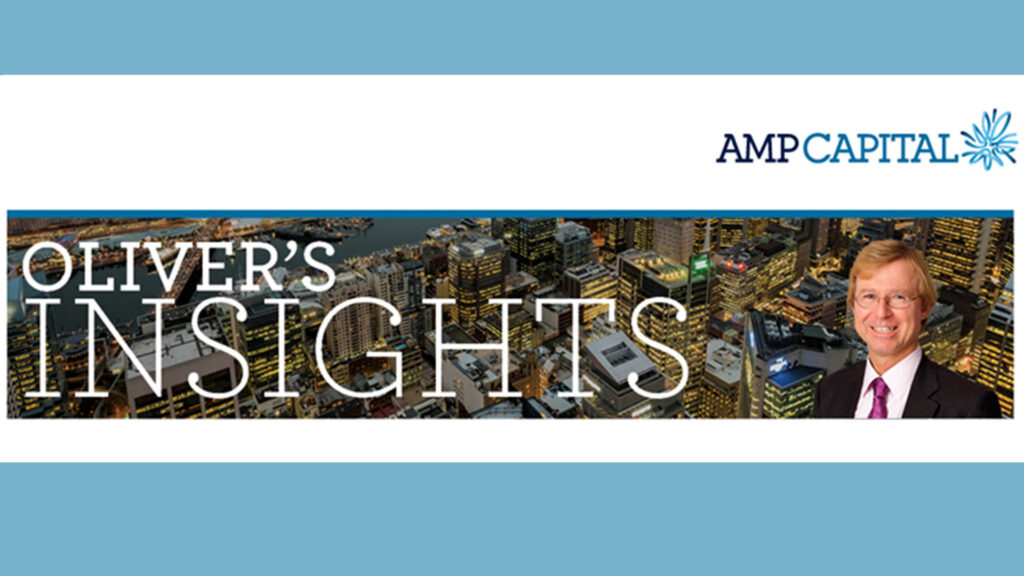Dr Shane Oliver, Head of Investment Strategy & Chief Economist at AMP, discusses the RBA meeting.
Key points:At its August meeting the RBA left the cash rate on hold at 4.35% as widely expected, leaving it unchanged for nine months now.The RBA reiterated that it is “not ruling anything in or out”, but its statement and Governor Bullock’s comments continue to lean hawkish with more concern regarding too high inflation than rising unemployment and the RBA considering a hike but not a cut again.In particular, the RBA now sees a slightly slower return to the mid-point of the inflation target for trimmed mean inflation.RBA Governor Bullock noted that the Board discussed recent market volatility and “will keep an eye on this,” but appears to see it as a bit of an over-reaction.We see rates as having peaked, with the first cut coming in February next year. However, there is a high risk the RBA will have to start cutting rate cuts before year end if US recession fears continue to rise, unemployment here starts to follow the US up and share market falls continue.The RBA holds rates at 4.35%, and now sees a slightly slower decline in underlying inflation to the mid-point of its target range
In leaving rates on hold the RBA noted that high rates are continuing to work to rebalance demand and supply, inflation has fallen from its peak, momentum in domestic activity has been weak and the global outlook remains uncertain with global financial markets volatile of late. However, it also noted that inflation is still too high and its proving persistent of late and demand remains in excess of supply in the economy.
The RBA revised up slightly its growth forecasts (reflecting stronger public demand and consumption) but also revised up slightly its unemployment forecasts.
It revised its headline CPI forecasts to allow for government “cost of living” measures which as currently legislated are seen pushing inflation down to 3% by year end but will push it back up to 3.7% next year (if they are not continued).
More significantly though it now sees a slightly slower return for trimmed mean inflation to target over the next two years.
Source: RBA, AMP
The RBA retained its comments that its “not ruling anything in or out”. But its language continues to lean mildly hawkish with the Board still only considering holding or raising rates with concerns about ongoing excess demand, still too high inflation and a slightly slower decline in trimmed mean inflation. In particular, Governor Bullock noted that a “near term reduction in the cash rate does not align with the Board’s current thinking.”
The RBA did note that “policy will need to be sufficiently restrictive until the Board is confident that inflation is moving sustainably towards the target range”, which may be interpreted as allowing a bit more leeway in terms of when the RBA will first start cutting.
But overall a rate cut still appears to be fair way off based on the RBA’s current thinking.
Our view remains that the next move in rates will be down
Our assessment remains that the RBA’s cash rate has peaked and we see five reasons why the next move in rates will likely be down: monetary policy remains restrictive; the full impact of past rate hikes is still feeding through; recession risks are high as indicated by the ongoing slump in real household spending per capita and slowing population growth which will add to the risk; forward looking jobs indicators warn of a significant further rise in unemployment ahead; and wages growth has peaked which will slow underlying services inflation.
The US experience with hotter inflation earlier this year now giving way to cooler inflation again and worries of recession suggests that the same thing could happen here. Particularly given that the actual interest rates borrowers pay here has gone up far more than in the US.
In terms of the timing of RBA rate cuts our base case is for a start to cuts in February as it will likely to take more than one good quarterly CPI release to see the RBA get “confident that inflation is moving sustainably towards the target” and so it will likely wait for the December quarter CPI release in late January before starting to cut in February.
However, there is a rising risk that rate cuts will come sooner if share markets continue to fall sharply and economic data increasingly warns of a high risk of recession.
In terms of what the RBA should do as opposed to what we think it will do, given the US experience it should now be starting to give consideration to a cut in interest rates as it now risks much higher unemployment and inflation falling below target.
Source: Bloomberg, AMP
Ends
Important note: While every care has been taken in the preparation of this document, neither National Mutual Funds Management Ltd (ABN 32 006 787 720, AFSL 234652) (NMFM), AMP Limited ABN 49 079 354 519 nor any other member of the AMP Group (AMP) makes any representations or warranties as to the accuracy or completeness of any statement in it including, without limitation, any forecasts. Past performance is not a reliable indicator of future performance. This document has been prepared for the purpose of providing general information, without taking account of any particular investor’s objectives, financial situation or needs. An investor should, before making any investment decisions, consider the appropriateness of the information in this document, and seek professional advice, having regard to the investor’s objectives, financial situation and needs. This document is solely for the use of the party to whom it is provided. This document is not intended for distribution or use in any jurisdiction where it would be contrary to applicable laws, regulations or directives and does not constitute a recommendation, offer, solicitation or invitation to invest.
